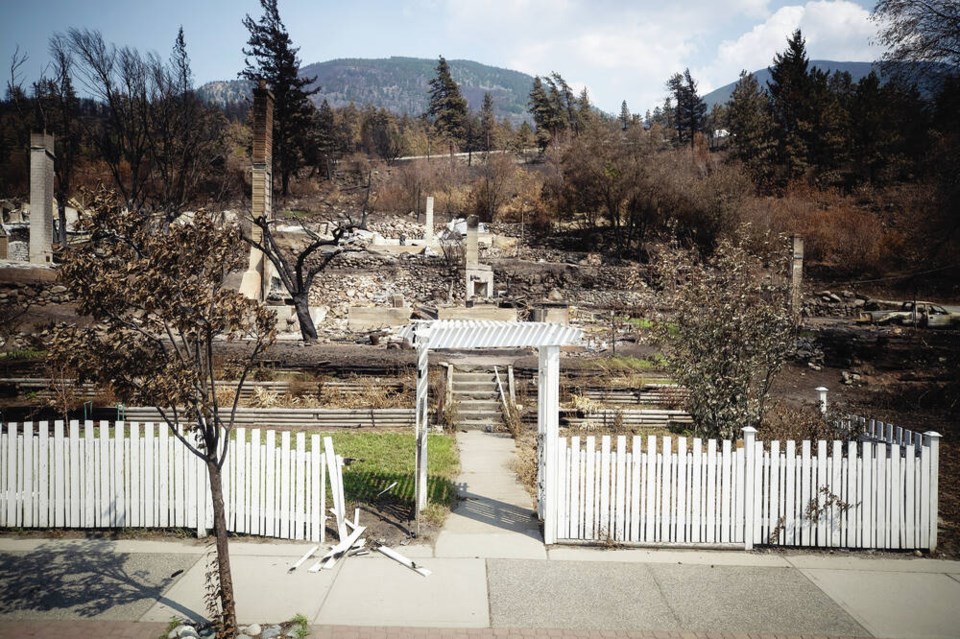A new assessment of damage caused by extreme weather in 2021 has found heat waves, wildfires and floods cost British Columbia up to $17 billion.
The estimate, released Wednesday in a 91原创 Centre for Policy Alternatives report, found that the combined costs of disaster in 2021 likely ranges from $10.6 billion to $17.1 billion — far outstripping previous estimates.
That’s equivalent to roughly three to five per cent of B.C.’s gross domestic product, said Marc Lee, author and a senior economist with the centre working on climate justice.
“It’s a big number. But I don’t think anyone will be surprised,” Lee said.
Lee says he followed best practices in evaluating economic impacts due to extreme weather, counting both insured and uninsured losses, the cost of damage to governments and hits to individual finances as displaced or stranded workers were prevented from earning a living.
That included nearly 33,000 people evacuated due to wildfire and more than 17,000 evacuated or stranded due to flooding.
During the June 2021 heat dome, workers suffered both financial and physical distress. According to WorkSafeBC, 71 out of 115 worker injury claims were due to heat stress, and the report found high-end labour market losses during the heat wave came to almost $330 million.
Construction, food services and drinking places, and manufacturing were estimated to be hit hardest.
Wildfires cost workers up to $562 million, with those in retail trade and accommodation and food services calculated to be the most affected.
And the atmospheric-river-driven flooding event is thought to have cost workers — most in transportation and warehousing jobs — almost $1.5 billion, according to the report.
“All of those costs come out of workers’ pockets,” Lee said.
Insured damages, meanwhile, came nowhere close to what people had to pay out of pocket.
The report found uninsured losses due to wildfire may have climbed as high as $501 million, more than double the $215 million in insured losses incurred in 2021.
At the high end, flooding in November 2021 could have led to almost $5 billion in non-insured damages — over seven times more than the $675 million in insured losses.
“I think that whole thing needs to be rethought,” Lee said. “What’s a more broad-based safety net look like given the disasters we’ll be seeing?”
Governments footed the largest costs — between 40 and 60 per cent of total damage estimates. That includes more than $1.2 billion in public expenditures related to wildfires and $7 billion connected to flooding and landslides.
The report excluded losses outside of B.C. in shipping or supply-chain disruptions in other provinces and territories. Costs associated with loss of life or people’s deteriorating health, such as increases in emergency-room visits as extended smoky periods dominated summer skies, were also not included.
With estimates not yet finalized, Lee says even the high-end figure of $17.1 billion could balloon in the coming months and years. “It’s still somewhat conservative,” he said.
It’s both challenging and rare to get total economic losses for extreme weather events, says Glenn McGillivray, managing director of the Institute for Catastrophic Loss.
That’s because there are no firmly established boundaries for what should and what shouldn’t be counted as damages.
“I’ve been advocating for this for a long time,” he said. “It helps people plan, for one thing. Secondly, it helps us understand the impacts these events have on people, governments and businesses.”
Perhaps more importantly, McGillivray said if politicians see the costly impacts of extreme weather events made worse by climate change, they may be more willing to act in the future.
“These numbers are really important to get. I applaud this group for trying,” he said. “Would I bet the family farm on the number? No, I wouldn’t … But they’re going to give you a magnitude.”



